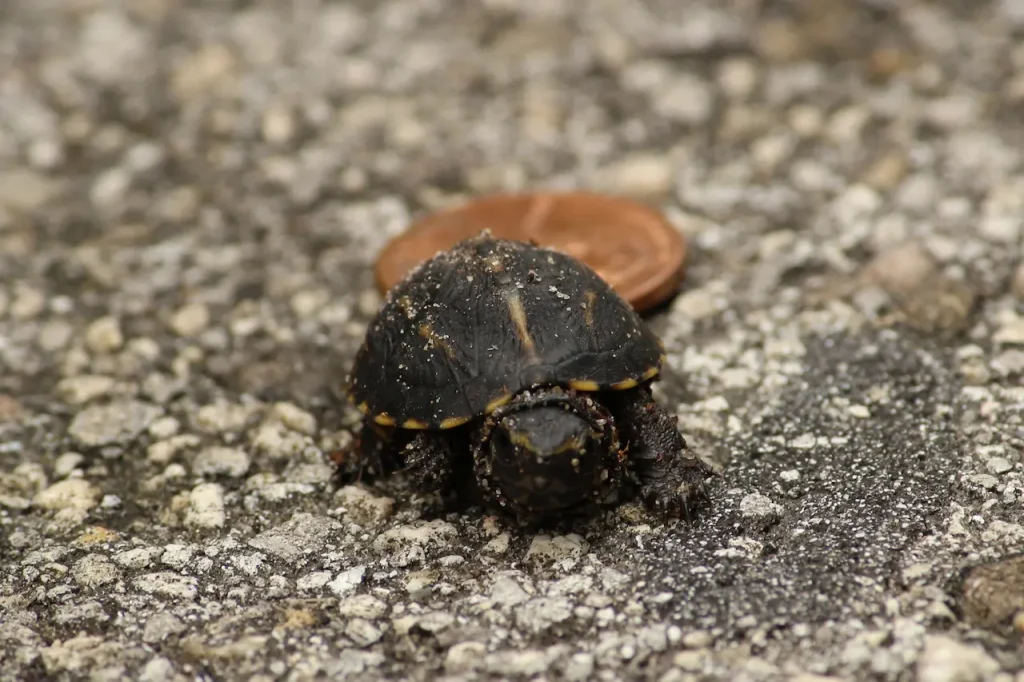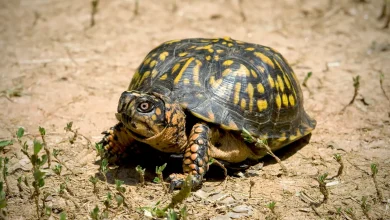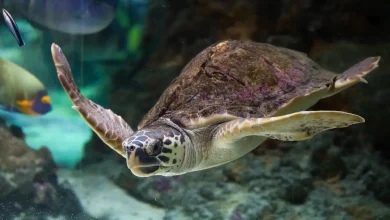Box turtles as pets and what to consider. Box turtles are popular pets, both within their native range and abroad. They need exposure to real sun or proper artificial light to stay healthy. It is also important to provide them with a suitable diet. In the wild, box turtles are omnivores that will eat a lot of different things. Their main food source is invertebrates, such as insects and worms, but they also eat a lot of vegetable matter, including leaves, fruits and berries. It is important to give them an equally varied diet in captivity to ensure proper nutrition.
They make popular pets because they are relatively docile but still somewhat exotic-looking. Some of the species/subspecies come in brilliant colours and designs. Most box turtles are safe to pick up and will not bite humans, but you should still not pick them up too often or tempt fate by brushing your finger at their snout.
Table of Contents
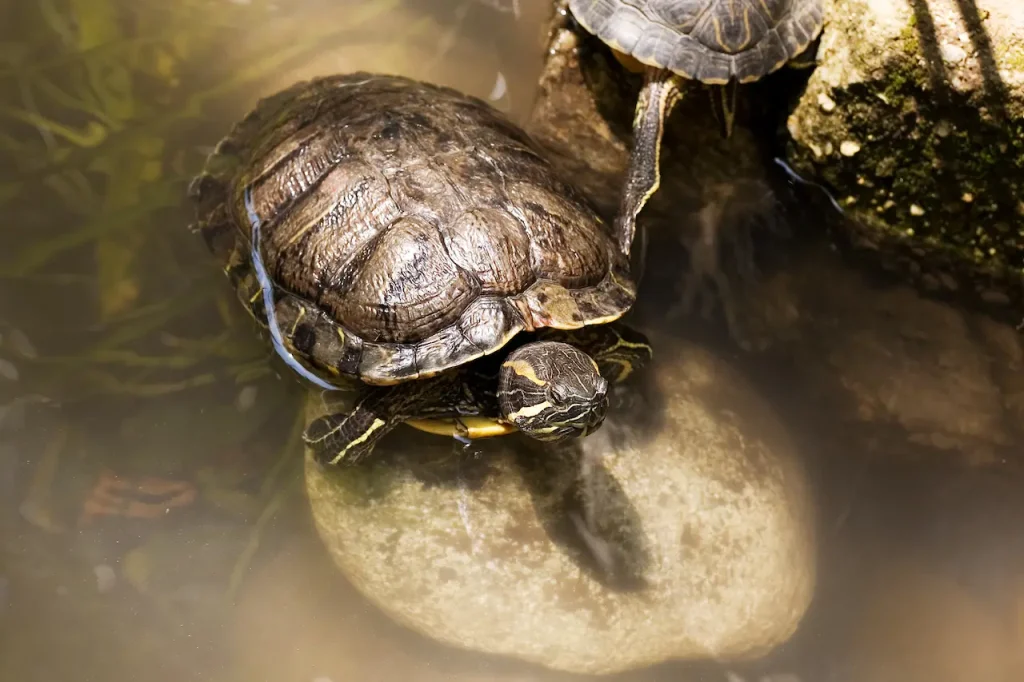
Box turtles do not make suitable pets for small children. They do not like to be handled too much and should be handled by a calm and gentle adult. Young children tend to handle them too much, too roughly and move them to fast which causes the turtles stress. Most box turtle preservation organizations and experts such as Jim Harding of the Michigan State University Museum recommend against giving box turtles as pets to small children. It is important to remember that box turtles are not “toys” and have no need for “play”.
Box turtles are a bit of a challenge to take care of for some people. Since they have not been domesticated, they are still very much wild animals; even when bred in captivity. Speciemens who have been handled by humans while young will however be more mellow than wild specimens. Their tank or enclosure must simulate their wild environment to reduce stress and help them live longer. Their lifespan shortens in captivity in many cases. You must do your research before taking one as a pet.
In parts of the world, including several U.S. states, you need a permit to legally keep a box turtle
Box Turtles As Pets And Their Diet
As stated earlier, box turtles eat both insects and plant matter. This combination makes them omnivores.
When they are younger and still growing, they need extra protein in their diet. Hatchlings are almost exclusively carnivores until they are older.
The animal matter consumed by a box turtle is most commonly insects. Slugs, cockroaches, crickets, worms, grubs, and so forth all make a good meal for a box turtle. Insects are their most common prey because they are small and plentiful, but they will sometimes eat larger creatures when they have access to them. People have reported finding box turtles eating animals such as small rodents and birds that have been trapped or have died.
Plant matter consumed by them is often greens, such as lettuce, moss, and certain types of grass. They will also eat fallen fruits and berries when they can find them. They will also eat fungi, such as mushrooms. Some species will even eat poisonous mushrooms regularly, which makes them poisonous to eat in turn; giving them a defense against predators.
Box Turtles As Pets And Behavior in the Wild
A common trait that many box turtles share is a deep connection to the location they were born in. Most specimens do not travel far from the place of their birth.
One of the leading causes in the decline of box turtles is humans taking them from their homes and then rereleasing them elsewhere in the wild. Box turtles who experience this will often wander, trying to find their original home until they die.
Box turtles are sometimes the prey of wild animals, such as raccoons. They are easiest to target when they are still in their eggs, while hatchlings, or when they are hibernating. To defend themselves from predators, a box turtle can seal itself in its shell entirely. Once its limbs are protected, it will sometimes pop its head out to snap at the attacker.
Box turtles enjoy their privacy, and are often reclusive animals in the wild. They like to hide in logs and brush, and will sometimes burrow into sand and mud.
Most species/subspecies will hibernate during the colder months, when food is harder to find and less heat is available to them.
Box Turtles As Pets And Their Behavior in Captivity
Box turtles are relatively docile around humans, and rarely bite. Biting cases most often occur when the box turtle was being intentionally irritated or they mistook their owners hand as food. If you’ve been handling anything that your box turtle commonly eats (such as fruit, vegetables, or feeder mice) you should wash your hands before handling them; as the scent on your fingers can be deceptive.
Their shortened lifespan in captivity is due in part to the strong connection they have to where they were born. This is less prominent in box turtles that were bred in captivity, and it is preferable that you buy one that was born in these conditions, and not taken from the wild. This spares wild population the pressure from harvesting and give you a turtle better adapted to life in captivity.
Box turtles do not understand the concept of glass, and should never be kept in a tank or enclosure that they can see out of. Oftentimes, they will endlessly push against the invisible wall in a confused and fruitless effort to continue moving forward. This is highly stressful for them.
Box Turtles As Pets Health and Lifespan
Many hatchlings die of exposure during their first winter
The average lifespan for box turtles in the wild seems to be around fifty years. Although there is anecdotal evidence suggesting that some specimens can live to be over a hundred. Their lifespan tends to decrease when in captivity, but poor ownership by many unlearned/uncaring owners has helped shape those numbers. A well-cared-for turtle that was born in captivity should be able to live as long as their wild counterparts,
Many hatchlings die to exposure during their first winter.
Asian Box Turtles As Pets
Separate from the North American box turtles (Terrapene) are Asian box turtles (Cuora). They share the common trait of a dome shell that is hinged, and can shut entirely.
Just like the various species/subspecies of North American box turtles, Asian box turtles have varied appearance and personality based on the species/subspecies in question. A trademark that many of them carry is colorful stripes going down their neck and face.
While they are omnivores, some of their species/subspecies lean more heavily towards outright carnivores or herbivores (these terms meaning meat-eater and plant-eater, respectively).
In America, they are less commonly available in the pet trade. Read more about Asian Box Turtles.
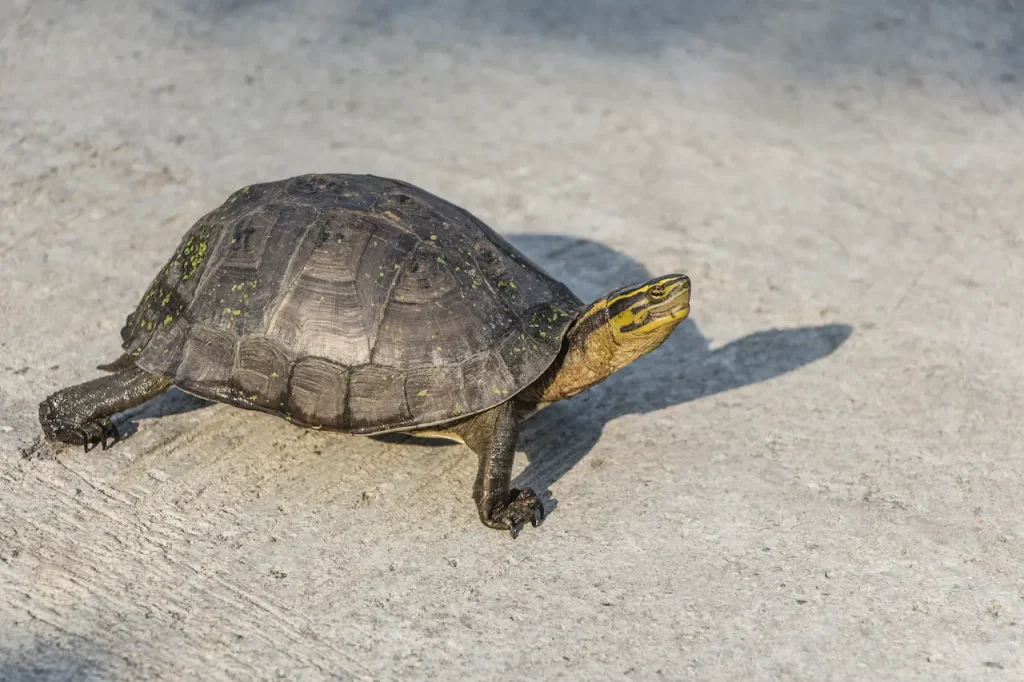
Box turtles as pets and being kept in captivity isn’t usually a great idea due to their declining numbers and so often their death in captivity. If you find one in the wild, try and move it out of danger and put it back. If you have to take it to the vet, have it cared for and then return it to the place you found it. Box turtles as pets are no the easiest turtle to care for and we really need to get their numbers up in the wild. If you want a pet turtle, maybe consider an easier breed to care for that isn’t endangered.
